European Projects
-
Description
 MICC aims to introduce the use of on-site mobile communications as a way of improving the global competititevess of the European construction sector. Such communications are essential if quality, efficiency and safety are to be improved. MICC is defining a European wide solution which will enable all on-site organisations to radically improve management of the site through new mobile applications and services.
After laboratory and site experimentation of emerging technology, the project will perform advanced sample application experiments on four construction sites to demonstrate the viability of the architecture and the improvement in quality, efficiency and of the long-term economic efficiency of the European construction industry in competing in the international marketplace. The project is user-led and takes its direction from the fundamental requirements of the construction industry. The Consortium has set up a Project Industry Forum to cooperate closely with suppliers and communication network operators. The partners are already in contact with National Hosts.
MICC aims to introduce the use of on-site mobile communications as a way of improving the global competititevess of the European construction sector. Such communications are essential if quality, efficiency and safety are to be improved. MICC is defining a European wide solution which will enable all on-site organisations to radically improve management of the site through new mobile applications and services.
After laboratory and site experimentation of emerging technology, the project will perform advanced sample application experiments on four construction sites to demonstrate the viability of the architecture and the improvement in quality, efficiency and of the long-term economic efficiency of the European construction industry in competing in the international marketplace. The project is user-led and takes its direction from the fundamental requirements of the construction industry. The Consortium has set up a Project Industry Forum to cooperate closely with suppliers and communication network operators. The partners are already in contact with National Hosts.Duration
September 1995 - August 1998 (01/09/1995 - 31/08/1998)
More Info
Project Website: http://cordis.europa.eu/search/index.cfm?fuseaction=proj.simpledocument&PJ_RCN=1428168
-
Description
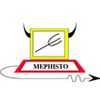 The main objective of MEPHISTO is to apply the principles of network management (TMN) to advanced all-optical core networks, namely exploiting wavelength division multiplexing (WDM) for transmission and routing. To this purpose, the project will develop an innovative and generic information model for operation and management of optical networks and network elements. MEPHISTO will also adapt and develop management software applications to perform fault, configuration and performance management, according to this new information model. Finally, MEPHISTO will demonstrate and assess the developed management system both in an optical network emulation software and in the hardware prototype of an optical WDM ring network.
The main objective of MEPHISTO is to apply the principles of network management (TMN) to advanced all-optical core networks, namely exploiting wavelength division multiplexing (WDM) for transmission and routing. To this purpose, the project will develop an innovative and generic information model for operation and management of optical networks and network elements. MEPHISTO will also adapt and develop management software applications to perform fault, configuration and performance management, according to this new information model. Finally, MEPHISTO will demonstrate and assess the developed management system both in an optical network emulation software and in the hardware prototype of an optical WDM ring network.Duration
July 1996 - June 1999 (01/07/1996 - 30/06/1999)
More Info
Project Website: http://cordis.europa.eu/search/index.cfm?fuseaction=proj.simpledocument&PJ_RCN=1939757
-
Description
 MOON is a project in the scope of the second ACTS call and aims at the development of a framework for the management of the photonic layer of the future pan-European transport network. Key functionalities will be implemented in a field demonstrator network, called MOONET. Management of wavelength division multiplexing (WDM) optical cross connects and WDM transmission links, spanning some hundreds of kilometres using optical in-line amplifiers, will be included
MOON is a project in the scope of the second ACTS call and aims at the development of a framework for the management of the photonic layer of the future pan-European transport network. Key functionalities will be implemented in a field demonstrator network, called MOONET. Management of wavelength division multiplexing (WDM) optical cross connects and WDM transmission links, spanning some hundreds of kilometres using optical in-line amplifiers, will be includedDuration
September 1996 - December 1998 (01/09/1996 - 31/12/1998)
More Info
Project Website: http://cordis.europa.eu/search/index.cfm?fuseaction=proj.simpledocument&PJ_RCN=1940078
-
Description
 The objective of the InfoWin project is to provide the ACTS Information Window. This window allows information to flow from ACTS projects to the outside world, and also helps the outside world to be visible to the ACTS projects.
The window is intended to ensure that the work carried out in ACTS is timely and relevant. It ensures that ACTS participants keep an up-to-date view of the development of the market and its needs, and simultaneously it ensures visibility of the work carried out within ACTS.
To maximise the synergy to be obtained by carrying out the research and development of ACTS within the overall framework of a collaborative programme, the InfoWin project provides support for the internal communication of the ACTS programme, both within the projects and between projects and the Commission.
The objective of the InfoWin project is to provide the ACTS Information Window. This window allows information to flow from ACTS projects to the outside world, and also helps the outside world to be visible to the ACTS projects.
The window is intended to ensure that the work carried out in ACTS is timely and relevant. It ensures that ACTS participants keep an up-to-date view of the development of the market and its needs, and simultaneously it ensures visibility of the work carried out within ACTS.
To maximise the synergy to be obtained by carrying out the research and development of ACTS within the overall framework of a collaborative programme, the InfoWin project provides support for the internal communication of the ACTS programme, both within the projects and between projects and the Commission.
Duration
36
More Info
Project Website: http://cordis.europa.eu/search/index.cfm?fuseaction=proj.simpledocument&PJ_RCN=1428535
-
Description
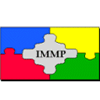 The Integrated Multimedia Project (IMMP) primarily studies the integration of interactive multimedia services and system architectures addressing both residential and business users and focusing on the overlaps and synergy between the two. The main focus is on investigating and using IP/ATM connections and using applications relevant to the business sector. The evolution towards new multimedia applications will take place in a step by step fashion with successful services developed only after extensive end-user evaluations. This process will be followed in the project emphasising end-user trials and the feedback from them. t is necessary for IMMP to conduct focused trials with selected services to understand the key ssues (technical, human and commercial) which will affect the successful deployment d end user acceptance of such services. Of particular relevance will be common new services that can be utilised in both business and residential areas.
The Integrated Multimedia Project (IMMP) primarily studies the integration of interactive multimedia services and system architectures addressing both residential and business users and focusing on the overlaps and synergy between the two. The main focus is on investigating and using IP/ATM connections and using applications relevant to the business sector. The evolution towards new multimedia applications will take place in a step by step fashion with successful services developed only after extensive end-user evaluations. This process will be followed in the project emphasising end-user trials and the feedback from them. t is necessary for IMMP to conduct focused trials with selected services to understand the key ssues (technical, human and commercial) which will affect the successful deployment d end user acceptance of such services. Of particular relevance will be common new services that can be utilised in both business and residential areas.Duration
18
-
Description
The primary objective of the Action is to devise possible architectures for the next generation of high capacity optical transport and also access networks. The target architecture should
o provide virtually unlimited end-to-end bandwidth regardless of distance enabling instant movement of huge amounts of data for applications,
o enable efficient and simple multicasting and broadcasting of broadband signals,
o be flexible and agile in order to accommodate abrupt and unpredictable traffic surges and to react instantaneously when failures occur, allowing seamless and errorless transmission of large data blocks,
o be transparent to all sorts of digital signals and protocols so that it would enable to accommodate a number of network types and services simultaneously or in succession deployed over time,
o trade bandwidth for simplicity to alleviate the complexity problem in the communication networks resulting mainly from the ever increasing amount of software residing in the networks that raises costs and lowers reliability of the networks.Duration
01/02/1999-31/07/2003
More Info
Project Website: http://www.ure.cas.cz/dpt240/cost266/
-
Description
 LION aims at giving answers to Network Operators (N.O.) about interoperability of client transport networks (e.g. ATM, SDH, IP-based) over an optical server one recommended as Optical Transport Network (OTN). In particular, the major target is to design and test over a testbed a multi-layer resilient network in a multi-domain environment. First the N.O. requirements will be defined for envisaged multi-layer network scenarios. Cost-effective integrated resilience strategies will be investigated supported by planning evaluations. The ITU-T functional modelling will be adopted to define first the OA&M and management requirements and then specifications for interfaces between network clients and OTN and between OTN domains. An "umbrella" management architecture that enables integration of TMN, WBEM, and SNMP will be designed to allow N.O. to manage the network as a whole. The above requirements and specifications will be translated into systems and sub-systems implementation to test in a testbed.
LION aims at giving answers to Network Operators (N.O.) about interoperability of client transport networks (e.g. ATM, SDH, IP-based) over an optical server one recommended as Optical Transport Network (OTN). In particular, the major target is to design and test over a testbed a multi-layer resilient network in a multi-domain environment. First the N.O. requirements will be defined for envisaged multi-layer network scenarios. Cost-effective integrated resilience strategies will be investigated supported by planning evaluations. The ITU-T functional modelling will be adopted to define first the OA&M and management requirements and then specifications for interfaces between network clients and OTN and between OTN domains. An "umbrella" management architecture that enables integration of TMN, WBEM, and SNMP will be designed to allow N.O. to manage the network as a whole. The above requirements and specifications will be translated into systems and sub-systems implementation to test in a testbed.
The goal is to design and test a resilient and managed transport network realised by an OTN carrying different clients (e.g. SDH, ATM, IP-based) with interworking and interconnection between layer transport networks and domains. The identified requirements will be validated in a testbed where IP-routers and SDH equipment will be integrated over an OTN infrastructure. The following objectives will be met: define the interworking and interconnection requirements between client-server layer networks and domains; define the functional requirements of an IP-based transport network; enhance the functional architecture of an OTN to account for new emerging features (e.g. digital optical container); implement, integrate and test Network Node Interfaces (NNI) between transparent domains and Client Node Interfaces (CNI), both based on digital optical container; implement, integrate and test an "umbrella" management system over a testbed; to develop and test strategies for integrated resilience controlled by an overall OA&M and a management system adopting QoS demanding applications; make techno-economic evaluations of an IP-based network over an OTN.
The following milestones/results are foreseen: integrated multi-layer network requirements and scenarios; functional description of an integrated OTN carrying multi-clients; functional requirements and implementation of CNI and NNI based on digital optical container; design of an "umbrella" management architecture implemented with CORBA and WBEM; OA&M concepts in an integrated multi-layer network; resilience interworking strategies in multi-layer networks; multi-layer resilient network planning and evaluation; testbed validation experiments.Duration
48
More Info
Project Website: http://www.telecom.ntua.gr/lion/
-
Description
 Main objective is to propose a Packet-over-WDM network solution, including traffic properties and management, based on optical packets and asynchronous transmission over metro and backbone distances. The project will capitalise on both optics and electronics to find out the optimum combination to reach multi-Tb/s capacity. To cope with the on-going convergence in the transport of voice, data and multimedia applications, the project will also define several classes of service, adapted to optical layer specifics. On the metro side, the project will consider a buffer-less network using a medium access control protocol. The backbone will be based on 10 Tb/s multi-layer (wavelength and packet) opto-electronic medium access control protocol with opto-electronic packet routers, incorporating core and edge functions. Finally, the project will demonstrate highly integrated optical and electronic devices, included in a sub-equipped experimental platform. Work description: A first task will be to tackle the network issues: - Define network requirements and functional specifications of the network elements; - identify a migration path from short-term approaches; - Carry out traffic studies to analyse IP traffic behaviour when transported over WDM, and propose optimised buffering schemes, access control protocols and routing algorithms taking into account a multi-QoS environment; - Investigate network management issues, such as interoperability between packet and WDM levels. A second task will be to investigate and implement the required network elements: - A network testbed will be implemented with its associated access control protocol to show a buffer-less multi-QoS optical packet metro network of capacity beyond 1Tb/s (2.5Gb/s line-rate); - A 10-Tb/s opto-electronic optical packet router (2.5/10Gb/s line-rate) incorporating gateway functions between metro and backbone will be implemented using a two-layer (wavelength and packet) approach; A third task will be to provide the required advanced components: - Fast and highly integrated optical space and wavelength switching modules, based on semiconductor optical amplifiers (up to 32 gates per module), and incorporating adapted high-speed electronic drivers; - electronics for clock recovery, buffering, and switching will be developed, based on SiGe and III/V technologies. Milestones: - Functional definition and migration path of optical-packet-over-WDM scenario - Analysis of traffic models and logical network performance; - Info-model of packet/WDM management; - Test-bed including metro network, optical packet router and interfaces to IP - New architectures and routing techniques, 40Gb/s studies; - Optical switch modules (32 gates); - Electronics for signal processing.
Main objective is to propose a Packet-over-WDM network solution, including traffic properties and management, based on optical packets and asynchronous transmission over metro and backbone distances. The project will capitalise on both optics and electronics to find out the optimum combination to reach multi-Tb/s capacity. To cope with the on-going convergence in the transport of voice, data and multimedia applications, the project will also define several classes of service, adapted to optical layer specifics. On the metro side, the project will consider a buffer-less network using a medium access control protocol. The backbone will be based on 10 Tb/s multi-layer (wavelength and packet) opto-electronic medium access control protocol with opto-electronic packet routers, incorporating core and edge functions. Finally, the project will demonstrate highly integrated optical and electronic devices, included in a sub-equipped experimental platform. Work description: A first task will be to tackle the network issues: - Define network requirements and functional specifications of the network elements; - identify a migration path from short-term approaches; - Carry out traffic studies to analyse IP traffic behaviour when transported over WDM, and propose optimised buffering schemes, access control protocols and routing algorithms taking into account a multi-QoS environment; - Investigate network management issues, such as interoperability between packet and WDM levels. A second task will be to investigate and implement the required network elements: - A network testbed will be implemented with its associated access control protocol to show a buffer-less multi-QoS optical packet metro network of capacity beyond 1Tb/s (2.5Gb/s line-rate); - A 10-Tb/s opto-electronic optical packet router (2.5/10Gb/s line-rate) incorporating gateway functions between metro and backbone will be implemented using a two-layer (wavelength and packet) approach; A third task will be to provide the required advanced components: - Fast and highly integrated optical space and wavelength switching modules, based on semiconductor optical amplifiers (up to 32 gates per module), and incorporating adapted high-speed electronic drivers; - electronics for clock recovery, buffering, and switching will be developed, based on SiGe and III/V technologies. Milestones: - Functional definition and migration path of optical-packet-over-WDM scenario - Analysis of traffic models and logical network performance; - Info-model of packet/WDM management; - Test-bed including metro network, optical packet router and interfaces to IP - New architectures and routing techniques, 40Gb/s studies; - Optical switch modules (32 gates); - Electronics for signal processing.Duration
1/7/2000 - 30/6/2003
Contract number
IST-1999-11742
More Info
Project Website: http://cordis.europa.eu/data/PROJ_FP5/ACTIONeqDndSESSIONeq112422005919ndDOCeq581ndTBLeqEN_PROJ.htm
-
Description
 LONG aims to foresee and solve problems related to the design, configuration and deployment of Next Generation Telecommunication networks specially when new services and applications are carried out across them.
LONG aims to foresee and solve problems related to the design, configuration and deployment of Next Generation Telecommunication networks specially when new services and applications are carried out across them.
The new version of the IP protocol, IPv6, will become an integral part of these Next Generation networks. In addition to this, the proliferation of new high bandwidth and asymmetric access technologies, like ADSL and CATV, will also shape the network design of these Next Generation Networks. On the other side, applications must be aware of the advanced services provided by the networks and protocols, and must take into account the impact of the underlying network. LONG aims at gaining an in-depth knowledge in the design and deployment of IPv4/IPv6 transition scenarios, as well as in the operational inter-working when heterogeneous access (ADSL, CATV, ISDN) and transport (IP/ATM, IP/SDH, IP/WDM) technologies are in place. The integration of IPv6 with advanced network services will be validated in LONG.
On the other hand, LONG focuses on extending the framework of applications, so that they benefit from the services provided by these Next Generation networks. In order to achieve these goals, LONG faces the following objectives:
- To deploy a Next Generation testbed.
- To adapt and validate a representative set of applications to the Next Generation Network scenarios.
- To perform trials and experiments.
- To develop guidelines for migration of networks and applications and disseminate results.
Duration
1/12/2000 31/1/2003
Contract number
IST-1999-20393
More Info
Project Website: http://long.ccaba.upc.edu/
-
Description
The overall goal of the IST project NOBEL is to find and to validate (experimentally) innovative network solutions and technologies for intelligent and flexible optical networks, thereby enabling broadband services for all. Specifically project main objectives are:
* to define network architectures, evolutionary guidelines and a roadmap for core and metro optical transport networks towards intelligent data centric solutions (based on optical and electrical switching, e.g. ASON/GMPLS);
* to identify main drivers for the evolution of core and metro optical networks supporting end-to-end broadband services, and to derive technical requirements in accordance to this;
* to study efficient traffic/network engineering and resilience strategies in multi-layer/domain/service networks and interworking issues;
* to assess and describe social and techno-economic aspects regarding the deployment of network solutions and technologies for intelligent and flexible optical networks;
* to evaluate solutions for providing end-to-end Quality of Service;
* to identify network architectures, concepts and solutions for advanced packet/burst switching;
* to propose simplified strategies for the end-to-end management and control of intra/inter-domain connections in multi-layers networks (e.g. IP over Optics);
* to find enhanced solutions and technologies for physical transmission in transparent optical networks;
* to identify the key functional requirements from the architectural, management, control and transmission viewpoints and translate them into specifications, feasibility studies and prototype realizations for multi-service/multi-layer nodes with flexible client and adaptable transport interfaces;
* to assess existing technologies, components and subsystems in terms of efficiency and cost-effectiveness, deriving requirements and specifications for next generation components and subsystems, with respect to the network solutions identified;
* to integrate the prototype solutions of for multi-service/multi-layer nodes into existing test beds for experiments on advanced functionalities.Duration
24 months
Participants
# Telecom Italia - TILAB - Italy # Alcatel SEL Ag - ASEL - Germany # Alcatel CIT - ACIT - France # Alcatel Italia - AITA - Italy # British Telecom - BT - UK # Deutsche Telecom - DT - Germany # Ericsson AB - ERICSSON - Sweden # Lucent Technologies Network Systems GmbH - LUGmbH - Germany # Lucent Technologies Nederland BV - LUBV - Nederland # Marconi Communications ONDATA GmbH - MCONDATA - Germany # Marconi Communications S.p.A. - MCSPA - Italy # Pirelli Labs - PLABS - Italy # Siemens - SIEMENS - Germany # Telefonica I+D - TID - Spain # TeliaSonera - TS - Sweden # T-Systems Nova GmbH - T-Systems - Germany # ACREO - ACREO - Sweden # AGH eng. UMM-University of Mining and Metallurgy - AGH - Poland # CISCO - CISCO - Belgium # Telecommunications Technological Center of Catalonia - CTTC - Spain # France Telecom - FT - France # FhG-HHI - FhG-HHI - Germany # Interuniversity MicroElectronics Center - IMEC - Belgium # Nippon Telegraph and Telephone Corporation - NTT - Japan # National Technical University of Athens - NTUA - Greece # AIP-Politecnico of Milano - AIP - Italy # Scuola Superiore S.Anna - SAnna - Italy # Telenor - TELENOR - Norway # University College of London - UCL - UK # Budapest University of Technology and Economics - BUTE - Hungary # University of Stuttgart - UST - Germany # Universitat Politècnica de Catalunya - UPC - Spain # Ericsson Magyarorszag KFT - ETH - Hungary
Contract number
FP6-506760
More Info
Project Website: http://www.ist-nobel.org/Nobel/servlet/Nobel.Main
-
Description
 The E-NEXT Network of Excellence targets a key area of Information Society Technologies, namely computer networking. Framework Programme 6 aims to develop the technological basis and the people-skills necessary to deliver the promise of the information revolution - new audio-visual services and products, electronic delivery of business, health, education, entertainment, government, science and so on - and this will fundamentally impact every aspect of life and work. The delivery of all of these e-endeavours depends entirely on computer networks.E-NEXT aims to integrate a critical mass of expertise and to re-structure research practice such that Europe can take a lead in computer networking and act as a world force in this area. The main objectives of this NoE will be: the development of a virtual research centre to integrate the world-class research of the members and to stimulate the exchange of personnel, the education and training of personnel inside and outside the network, the dissemination of research results and in general the spreading of excellence, and the stimulation of innovation by appropriate technology transfer into existing and new companies, both large and small.E-NEXT will achieve these objectives through its management structure consisting of network and country coordination committees, and six workpackages: network coordination, joint research, integration and training, distributed work environment, spreading excellence, and dissemination.E-NEXT is targeted at line 3.1.8 in the First Call for proposals, Networked Audio-Visual Systems and Home Platforms. This line aims to 'support the innovation and development of technologies for end-to-end interoperable audio-visual networks, services and applications'. E-NEXT will make a major contribution to these aims, as well as potentially contributing to other areas of IST, for example to Broadband for All, and to Research Networking.
The E-NEXT Network of Excellence targets a key area of Information Society Technologies, namely computer networking. Framework Programme 6 aims to develop the technological basis and the people-skills necessary to deliver the promise of the information revolution - new audio-visual services and products, electronic delivery of business, health, education, entertainment, government, science and so on - and this will fundamentally impact every aspect of life and work. The delivery of all of these e-endeavours depends entirely on computer networks.E-NEXT aims to integrate a critical mass of expertise and to re-structure research practice such that Europe can take a lead in computer networking and act as a world force in this area. The main objectives of this NoE will be: the development of a virtual research centre to integrate the world-class research of the members and to stimulate the exchange of personnel, the education and training of personnel inside and outside the network, the dissemination of research results and in general the spreading of excellence, and the stimulation of innovation by appropriate technology transfer into existing and new companies, both large and small.E-NEXT will achieve these objectives through its management structure consisting of network and country coordination committees, and six workpackages: network coordination, joint research, integration and training, distributed work environment, spreading excellence, and dissemination.E-NEXT is targeted at line 3.1.8 in the First Call for proposals, Networked Audio-Visual Systems and Home Platforms. This line aims to 'support the innovation and development of technologies for end-to-end interoperable audio-visual networks, services and applications'. E-NEXT will make a major contribution to these aims, as well as potentially contributing to other areas of IST, for example to Broadband for All, and to Research Networking.
Duration
1/1/2004 - 31/12/2006
Contract number
6FP-506869
More Info
Project Website: http://www.ist-world.org/ProjectDetails.aspx?ProjectId=ff1e5f5f7d4a4173994872fcb9591266
-
Description
 The proposed Network of Excellence (NoE) aims at integrating and focusing the rich know-how available in Europe on optical communication and networks, both in universities and in research centres of major telecom manufacturers and operators. The set of available expertises ranges from optical technologies, to networking devices, to network architectures and protocols, to the new services fostered by photonic technologies. The NoE will contribute to the Strategic Objective Broadband for All, with a particular focus (quoting from the EC IST 2003-2004 Workprogramme at page 15) on low cost access equipment, on new concepts for network management, control and protocols, and on increasing bandwidth capacity in the access network as well in the underlying optical core/metro network (including in particular optical burst and packet switching).
The main technical focus of the NoE is to show which are the potential advantages of optical technologies in telecommunication networks with respect to electronic technologies. A strong integration among the participants to the NoE will favour a consensus on the engineering choices towards the deployment of costeffective optical technologies in networking that will support the future Internet, hopefully providing inputs to the standardization bodies and guidelines to the operators, as well as competitive advantages to European telecom equipment manufacturers.
Integration will be pursued primarily by establishing long-term collaborations among partners in terms of research, of infrastructures sharing, and of education and training. The main instruments to achieve these long- lasting collaborations are the regular exchange of researchers between partners, and the development of joint teaching programs and events.
Dissemination will be pursued by means of coordinated publication activities, offerings of training programs, organization of technical events, and interactions with other consortia in the same technical area. Research activities will mainly be carried out in research programs external to the NoE, both at the national and at the European levels. Well focused technical research programs will be activated internally to the NoE.
The proposed Network of Excellence (NoE) aims at integrating and focusing the rich know-how available in Europe on optical communication and networks, both in universities and in research centres of major telecom manufacturers and operators. The set of available expertises ranges from optical technologies, to networking devices, to network architectures and protocols, to the new services fostered by photonic technologies. The NoE will contribute to the Strategic Objective Broadband for All, with a particular focus (quoting from the EC IST 2003-2004 Workprogramme at page 15) on low cost access equipment, on new concepts for network management, control and protocols, and on increasing bandwidth capacity in the access network as well in the underlying optical core/metro network (including in particular optical burst and packet switching).
The main technical focus of the NoE is to show which are the potential advantages of optical technologies in telecommunication networks with respect to electronic technologies. A strong integration among the participants to the NoE will favour a consensus on the engineering choices towards the deployment of costeffective optical technologies in networking that will support the future Internet, hopefully providing inputs to the standardization bodies and guidelines to the operators, as well as competitive advantages to European telecom equipment manufacturers.
Integration will be pursued primarily by establishing long-term collaborations among partners in terms of research, of infrastructures sharing, and of education and training. The main instruments to achieve these long- lasting collaborations are the regular exchange of researchers between partners, and the development of joint teaching programs and events.
Dissemination will be pursued by means of coordinated publication activities, offerings of training programs, organization of technical events, and interactions with other consortia in the same technical area. Research activities will mainly be carried out in research programs external to the NoE, both at the national and at the European levels. Well focused technical research programs will be activated internally to the NoE. Duration
24 months
Participants
e-Photon/ONe involves 37 partners, coming from 12 member states (Austria, Belgium, Denmark, France, Germany, Greece, Italy, Netherlands, Spain, Sweden, Portugal, United Kingdom), 3 candidate countries (Hungary, Poland, Turkey) and 2 third countries (Croatia, applicant country and target INCO West Balkan country, and Norway, associated country). The consortium is composed by 29 universities and other higher education institutes, 4 telecom operators, 1 manufacturer, 3 non-profit research centres.
Contract number
FP6-001933
More Info
Project Website: http://www.e-photon-one.org/ephotonone/servlet/photon.Generar
-
Description
 Within the 6th Framework Programme, MUPBED was an integrated R&D project in the area "Research Network Infrastructure" of IST (Information Society Technologies) and it was partially funded by the European Commission. The main goal of the IST Project MUPBED was to integrate and validate, in the context of user-driven large-scale testbeds, ASON/GMPLS (Automatically Switched Optical Network/Generalised Multi Protocol Label Switching) technology and network solutions as enablers for future upgrades to European research infrastructures. This goal was pursued by creating a large experimental environment to assess the proposed network solutions, and that was offered as an open test platform to other European research projects and users. The testbed represented a multi-layer network based on IP/MPLS and ASON/GMPLS technologies, equipped with a unified control plane and designed to support the highly demanding applications of the European research community.
The main goal of the IST Project MUPBED is to integrate and validate, in the context of user-driven large-scale testbeds, ASON/GMPLS (Automatically Switched Optical Network/Generalised Multi Protocol Label Switching) technology and network solutions as enablers for future upgrades to European research infrastructures.
This goal will be pursued by creating a large experimental environment to assess the proposed network solutions, and that will be offered as an open test platform to other European research projects and users. The testbed will represent a multi-layer network based on IP/MPLS and ASON/GMPLS technologies, equipped with a unified control plane and designed to support the highly demanding applications of the European research community.
Some of the key project objectives are as follows:
* to identify service and network requirements of high-end applications for European research environments
* to define the ASON/GMPLS features matching the above requirements and enabling the penetration of broadband services in Europe
* to find and experimentally validate solutions for interoperability between different network domains
* to assess the ability of ASON/GMPLS solutions to support demanding research applications, such as Grid computing, through lab and field trials with a large user community (including NRENs)
* to develop guidelines for the introduction of ASON/GMPLS technologies and ultra-broadband services in future European research infrastructures
Taking advantage of the strong asset of existing testbeds, the MUPBED Project brings together leading European players from NRENs, operators, industry, research institutes and universities to ensure that all the aspects of advanced networking and emerging applications are covered. Different local testbeds will be interconnected to create a European-wide field trial, allowing the assessment of different applications and the impact of ASON/GMPLS technologies on future research network solutions.
Within the 6th Framework Programme, MUPBED was an integrated R&D project in the area "Research Network Infrastructure" of IST (Information Society Technologies) and it was partially funded by the European Commission. The main goal of the IST Project MUPBED was to integrate and validate, in the context of user-driven large-scale testbeds, ASON/GMPLS (Automatically Switched Optical Network/Generalised Multi Protocol Label Switching) technology and network solutions as enablers for future upgrades to European research infrastructures. This goal was pursued by creating a large experimental environment to assess the proposed network solutions, and that was offered as an open test platform to other European research projects and users. The testbed represented a multi-layer network based on IP/MPLS and ASON/GMPLS technologies, equipped with a unified control plane and designed to support the highly demanding applications of the European research community.
The main goal of the IST Project MUPBED is to integrate and validate, in the context of user-driven large-scale testbeds, ASON/GMPLS (Automatically Switched Optical Network/Generalised Multi Protocol Label Switching) technology and network solutions as enablers for future upgrades to European research infrastructures.
This goal will be pursued by creating a large experimental environment to assess the proposed network solutions, and that will be offered as an open test platform to other European research projects and users. The testbed will represent a multi-layer network based on IP/MPLS and ASON/GMPLS technologies, equipped with a unified control plane and designed to support the highly demanding applications of the European research community.
Some of the key project objectives are as follows:
* to identify service and network requirements of high-end applications for European research environments
* to define the ASON/GMPLS features matching the above requirements and enabling the penetration of broadband services in Europe
* to find and experimentally validate solutions for interoperability between different network domains
* to assess the ability of ASON/GMPLS solutions to support demanding research applications, such as Grid computing, through lab and field trials with a large user community (including NRENs)
* to develop guidelines for the introduction of ASON/GMPLS technologies and ultra-broadband services in future European research infrastructures
Taking advantage of the strong asset of existing testbeds, the MUPBED Project brings together leading European players from NRENs, operators, industry, research institutes and universities to ensure that all the aspects of advanced networking and emerging applications are covered. Different local testbeds will be interconnected to create a European-wide field trial, allowing the assessment of different applications and the impact of ASON/GMPLS technologies on future research network solutions.
Duration
1/7/2004 - 31/12/2007
Participants
UPC CCABA participated as "user community" for the testbed.
More Info
Project Website: www.ist-mupbed.org
-
Description
 The COST 291 Action Towards digital optical networks belongs to the COST Domain: Telecommunications Information Science and Technology. The primary objective of this action is to focus on novel network concepts and architectures exploiting the features of photonic technologies, to enable future broadband telecommunications networks (access, metro and core). It is aiming to propose a new generation of systems and networks that will accommodate the unpredictable growth of data traffic. The action was initiated by the High-speed networks and optical communications group of AIT and Prof. Ioannis Tomkos acts as Action Chairman. More than 28 partners contribute to the activities of the project (including several from new member states).
The COST 291 Action Towards digital optical networks belongs to the COST Domain: Telecommunications Information Science and Technology. The primary objective of this action is to focus on novel network concepts and architectures exploiting the features of photonic technologies, to enable future broadband telecommunications networks (access, metro and core). It is aiming to propose a new generation of systems and networks that will accommodate the unpredictable growth of data traffic. The action was initiated by the High-speed networks and optical communications group of AIT and Prof. Ioannis Tomkos acts as Action Chairman. More than 28 partners contribute to the activities of the project (including several from new member states).Duration
01/07/2004-31/06/2008
Contract number
COST action 291
More Info
Project Website: http://www.ait.edu.gr/cost291
-
Description
 The motivation of the EuQoS(End to end Quality of Service) project is to resolve the outstanding design issues presently associated with the delivery of end to end QoS service across heterogeneous networks. It is necessary to resolve these issues and accordingly upgrade the infrastructures so that new applications can be supported by the Internet and new service packages can be offered by operators, ISP and other service providers.
The motivation of the EuQoS(End to end Quality of Service) project is to resolve the outstanding design issues presently associated with the delivery of end to end QoS service across heterogeneous networks. It is necessary to resolve these issues and accordingly upgrade the infrastructures so that new applications can be supported by the Internet and new service packages can be offered by operators, ISP and other service providers.Duration
01/09/2004-31/01/2008
Contract number
6FP-004503
More Info
Project Website: http://www.euqos.eu/
-
Description
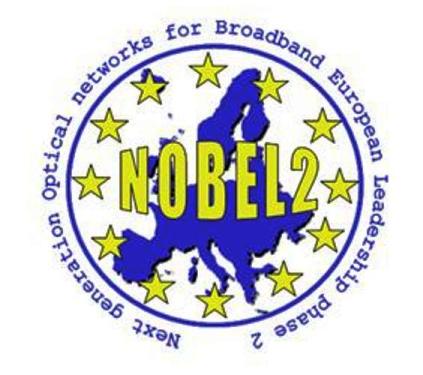 Leveraging all results obtained in phase 1, NOBEL phase 2 will consider the medium-term, long-term and extended long-term scenarios, focusing in particular on the last two, and will face with two major challenges. The first is the evolution of the data plane technology in order to reach an 'optimum techno-economic balance' between optical/electrical and circuit/packet routing and switching. The second is the evolution of the network control plane towards an unified control plane that is able of improving the seamless end-to-end network service capabilities in a flexible and scalable way. Moreover, NOBEL phase 2 will consider the opportunity deriving from the convergence of fixed and mobile services, analysing its impact on the metro and core parts of the network. To achieve the overall goals of NOBEL phase 2, the following main objectives were identified.
Leveraging all results obtained in phase 1, NOBEL phase 2 will consider the medium-term, long-term and extended long-term scenarios, focusing in particular on the last two, and will face with two major challenges. The first is the evolution of the data plane technology in order to reach an 'optimum techno-economic balance' between optical/electrical and circuit/packet routing and switching. The second is the evolution of the network control plane towards an unified control plane that is able of improving the seamless end-to-end network service capabilities in a flexible and scalable way. Moreover, NOBEL phase 2 will consider the opportunity deriving from the convergence of fixed and mobile services, analysing its impact on the metro and core parts of the network. To achieve the overall goals of NOBEL phase 2, the following main objectives were identified.
# Definition and demonstration of architectures for providing packet switched and circuit switched connections in an integrated network scenario. Identification of requirements and solutions for the core and metro networks supporting both fixed and mobile services.
# Study and evaluation of multi-layer traffic engineering and resilience schemes in different service and business scenarios to achieve cost-effective solutions. Effective Multilayer Traffic Engineering (MTE) solutions for the advanced network architectures developed in WP1 will be proposed by enhancing, updating and validating the concepts and solutions identified in NOBEL.
# Development of multilayer traffic models of new services and their use in traffic generators for the experimental activities carried out in WP1 and WP5 as well as for simulations in WP2 and WP3.
# Elaboration of new enhanced resilience mechanisms and evaluation of new case studies for medium term multi-layer scenarios and long-term multi-vendor networks (as defined in NOBEL), with integrated multi-layer concept.
# Techno-economic and cost-effectiveness analysis of network solutions and services.
# Identification, specification and assessment of NOBEL (phase 1) extended long term network architectures, concepts and solutions for the evolution of optical broadband core and metro networks to adapt the network and node structures to the dominating burst/packet type of data traffic (e.g. IPv4, IPv6 etc.) in order to provide the required flexibility, scalability, quality and reliability in the most effective way.
# Identification and development of enhanced, innovative solutions for the Control Plane (CP) and Management Plane (MP) and their collaboration in long term and extended long term network architectures, for end-to-end broadband services, with focus on CP issues in GMPLS networks.
# Evaluation of robust transport technologies and components by theoretical studies, technology assessments, and experiments. Implementation and verification of advanced network and node functionalities in dedicated laboratory experiments.Duration
24 months
Participants
# Telecom Italia - TI - Italy # Alcatel-Lucent Deutschland AG (formerly Alcatel SEL AG) # Alcatel-Lucent France (formerly Alcatel CIT) # Alcatel-Lucent Italia S.p.A. (formerly Alcatel Italia S.p.A. ) # British Telecommunications PLC - BT - UK # Ericsson AB - ERICSSON - Sweden # Lucent Technologies Network Systems GmbH - LUCENT GMBH - Germany has merged with Alcatel-Lucent Deutschland AG # Alcatel-Lucent Nederland BV (formerly Lucent Technologies Nederland BV ) # Ericsson GmbH - EDD - Germany # Coreoptics GmbH - COREOPTICS - Germany # Pirelli Labs S.p.A. - PIR - Italy # Nokia Siemens Networks GmbH (formerly Siemens Aktiengesellschaft) # Telefonica Investigación y Desarrollo Sociedad Anónima Unipersonal - TELEFONICA I+D - Spain # Deutsche Telecom AG - DTAG - Germany # ACREO AB - ACREO - Sweden # Akademia Gorniczo-Hutnicza Im. Stanislawa Staszica W Krakowie - AGH - Poland # CISCO Systems International BV - CISCO - Netherlands # Centre Tecnologic de Telecomunicacions de Catalunya - CTTC - Spain # France Telecom - FT - France # Fraunhofer Gesellschaft zur Förderung der angewandten Forschung e.V. - FRAUNHOFER - Germany # Interdisciplinar Instituut Voor Breedbandtecchnologie VZW - IBBT - Belgium # Institute of Communications and Computer Systems - ICCS - Greece # CoreCom - Consorzio Ricerche Elaborazione Commutazione Ottica Milano - CORECOM - Italy # Scuola Superiore di Studi Universitari e di Perfezionamento Sant'Anna - SSSA - Italy # Telenor ASA - TELENOR - Norway # University College of London - UCL - UK # Budapest University of Technology and Economics - BME - Hungary # University OF Stuttgart - USTIKR - Germany # Universitat Politècnica de Catalunya - UPC - Spain # Università degli studi di Padova - UNIPD - Italy # Istituto Nazionale di Fisica Nucleare - INFN - Italy # Politecnico di Torino - POLITO - Italy
Contract number
FP6-027305
More Info
Project Website: http://www.ist-nobel.org/Nobel2/servlet/Nobel2.Main
-
Description
The Network of Excellence e-Photon/ONe+ aims at integrating and focusing the rich know-how available in Europe on optical communication and networks, both in universities and in research centres of major telecom manufacturers and operators. This project built upon the experience gained within the previous NoE e-Photon/ONe, funded within the 1st IST call of FP6. The set of expertises available in the NoE ranges from optical technologies to networking devices, network architectures and protocols, new services fostered by photonic technologies. The NoE contributes to the Strategic Objective 'Broadband for All', with specific focus on low cost access and edge network equipment, for a range of technologies, including optical fiber, on new concepts for network management, control and protocols, and on increased bandwidth capacity, in the access network as well in the underlying optical core/metro network, including in particular optical burst and packet switching. The main technical aim of the e-Photon/ONe+ is to demonstrate and spread awareness of the potential advantages of optical technologies with respect to electronic technologies in both telecom networks and customer-controlled grids. The focus includes both incrementally improving and emerging optical technologies. In a joint effort, the participants to the NoE will work towards a consensus on the engineering choices for the deployment of cost-effective optical technologies as the foundation for the future Internet, with the strong intention to provide valuable inputs to the standardization bodies and guidelines to the operators, as well as competitive feedback to European telecom equipment manufacturers. Integration is pursued primarily by establishing long-term collaborations among partners in terms of research, of infrastructures sharing, and of education and training. The NoE provides the platform within which the main instruments to achieve these long-lasting collaborations, such as the regular exchange of researchers between partners, the involvement in coordinated research activities, and the development of joint teaching programs and events, will be effectively deployed. Dissemination is pursued by means of coordinated publication activities, of training programs implementation, of technical events and workshop organization, and of interaction with other consortia in the same technical area. Although research activities is mainly be carried out in research programs funded externally to the NoE, at both national and European levels, well-focused joint research programs will be activated and implemented internally to the NoE.
Duration
24 months
Participants
e-Photon/ONe+ involves 40 partners, coming from 14 member states (Austria, Belgium, Denmark, France, Germany, Greece, Hungary, Italy, Netherlands, Spain, Sweden, Poland, Portugal, United Kingdom), 2 candidate countries (Croatia, Turkey) and an associated country (Norway). The consortium is composed by 30 universities and other higher education institutes, 3 telecom operators, 3 manufacturers, 4 non-profit research centres.
Contract number
FP6-027497
More Info
Project Website: http://www.e-photon-one.org/ephotonplus
-
Description
 The CONTENT Network of Excellence targets a key area of Information Society Technologies, namely Content Delivery Networks for Home Users, as an integral part of Networked Audio-Visual Systems and Home Platforms.
CONTENT aims to build the European Research Area in this important communication topic by integrating a group of experts with the purpose of taking forward the state of the art and increasing European leadership in Content Networks. The overall goal of the CONTENT Network-of-Excellence is to integrate the research efforts of the members to address the technical challenges at the different system levels to enable easy-to-install and easy-to-use AV services in and between homes. In particular, the main technical objective will be to boost the potential of European Community Networking by improving Content Distribution infrastructures for the delivery of live (streaming) content and interactive stored content, and by integrating, in an open way, tools and mechanisms that would enable the curation of multimedia assets and their subsequent access for the benefit of the communities of users, producing a set of appropriate services for them, both in the context of the long tail or applied to (re-purposed) assets created by traditional broadcasters.
The CONTENT Network of Excellence targets a key area of Information Society Technologies, namely Content Delivery Networks for Home Users, as an integral part of Networked Audio-Visual Systems and Home Platforms.
CONTENT aims to build the European Research Area in this important communication topic by integrating a group of experts with the purpose of taking forward the state of the art and increasing European leadership in Content Networks. The overall goal of the CONTENT Network-of-Excellence is to integrate the research efforts of the members to address the technical challenges at the different system levels to enable easy-to-install and easy-to-use AV services in and between homes. In particular, the main technical objective will be to boost the potential of European Community Networking by improving Content Distribution infrastructures for the delivery of live (streaming) content and interactive stored content, and by integrating, in an open way, tools and mechanisms that would enable the curation of multimedia assets and their subsequent access for the benefit of the communities of users, producing a set of appropriate services for them, both in the context of the long tail or applied to (re-purposed) assets created by traditional broadcasters.
Duration
1/7/2006 30/6/2009
Participants
Universidad Carlos III de Madrid (coordinator) Universitat Politècnica de Catalunya - CCABA Lancaster University Université Pierre et Marie Curie Universidade de Coimbra National and Kapodistrian University of Athens Technische Universität Darmstadt AGH University of Science and Technology Universitet i Oslo Delft University of Technology Consorzio Interuniversitario Nazionale per l'Informatica - University of Napoli Associate Partners Microsoft Research Cambridge Philips Research Telefonica Publicidad e Información Danet GmbH Agilent Laboratories UK Alcatel-Lucent Nokia Research Center TECMATH / Blue Order TANDBERG ASA Google Switzerland GmbH NAVSHP Visionary Expert Group
Contract number
Priority 2-IST-NoE-038423
More Info
Project Website: http://www.ist-content.eu//index.php
More information of the research activites carried out at UPC within the CONTENT project can be found here
-
Description
 The DICONET project is targeting a novel approach to optical networking providing a disruptive solution for the development of the core network of the future. It is the vision and goal of our consortium to provide ultra high speed end-to-end connectivity with quality of service and high reliability through the use of optimized protocols and routing algorithms that will complement a flexible control and management plane offering flexibility for the future network infrastructure.
The DICONET project is targeting a novel approach to optical networking providing a disruptive solution for the development of the core network of the future. It is the vision and goal of our consortium to provide ultra high speed end-to-end connectivity with quality of service and high reliability through the use of optimized protocols and routing algorithms that will complement a flexible control and management plane offering flexibility for the future network infrastructure.
Duration
01/2008 - 06/2010
Contract number
INFSO-ICT-216338
More Info
Project Website: http://www.diconet.eu/
-
Description
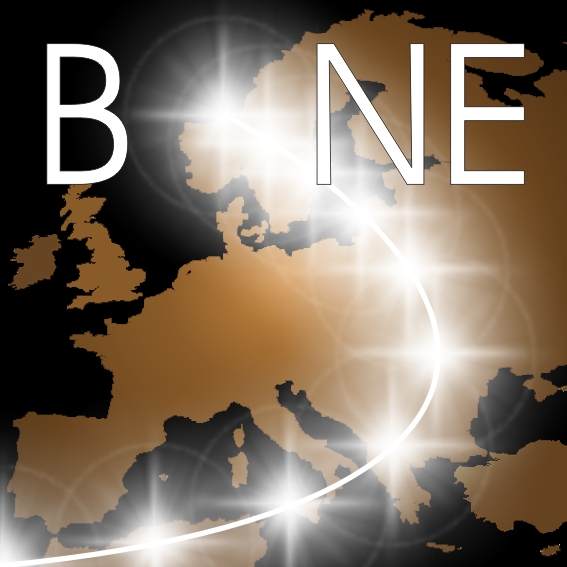 The BONE-proposal builds on the foundations laid out by the e-Photon/ONe projects in the previous Framework Programme. This Network of Excellence has successfully brought together over several years the research activities within Europe in the field of Optical Networks. The BONE-project intends to validate this effort by stimulating a more intensified collaboration, exchange of researchers and building on Virtual Centres of Excellence that can serve to European industry with education & training, research tools & testlabs and pave the way to new technologies & architectures.
The Network of the Future, which is the central theme of this Call, will have to cope with a wide variety of applications running on a wide variety of terminals and with an increasing number of connected devices and increasing speed and data-loads. Within this context, issues as convergence between mobile and fixed networks, or issues regarding the optimised broadband access in the last mile using a wide variety of technologies such as DSL, cable, WiMAX, WiFi, PLC,
are currently under investigation to adapt the current network to these increasing requirements for better performance.
The BONE-proposal looks further into the future and builds the final Network of the Future:
- a high capacity, flexible, reconfigurable and self-healing optical Core & Metro network which supports the transport of massive amounts of data
- a FTTx solution in which the x is as close as possible to the home, at the home, or even in the home. From this point the user is connected using terminal-specific technologies (wireless to handheld devices, fiber to home cinema, wireless to laptop, fixed connection to desktop,
)
- BONE clearly identifies the existence of the current technologies and also recognizes the fact that users also require the mobility of wireless access, but this mobile connection ends at a gateway or access points and from there a fixed connection is required and this fixed connection will finally be an optical link.
The BONE-proposal builds on the foundations laid out by the e-Photon/ONe projects in the previous Framework Programme. This Network of Excellence has successfully brought together over several years the research activities within Europe in the field of Optical Networks. The BONE-project intends to validate this effort by stimulating a more intensified collaboration, exchange of researchers and building on Virtual Centres of Excellence that can serve to European industry with education & training, research tools & testlabs and pave the way to new technologies & architectures.
The Network of the Future, which is the central theme of this Call, will have to cope with a wide variety of applications running on a wide variety of terminals and with an increasing number of connected devices and increasing speed and data-loads. Within this context, issues as convergence between mobile and fixed networks, or issues regarding the optimised broadband access in the last mile using a wide variety of technologies such as DSL, cable, WiMAX, WiFi, PLC,
are currently under investigation to adapt the current network to these increasing requirements for better performance.
The BONE-proposal looks further into the future and builds the final Network of the Future:
- a high capacity, flexible, reconfigurable and self-healing optical Core & Metro network which supports the transport of massive amounts of data
- a FTTx solution in which the x is as close as possible to the home, at the home, or even in the home. From this point the user is connected using terminal-specific technologies (wireless to handheld devices, fiber to home cinema, wireless to laptop, fixed connection to desktop,
)
- BONE clearly identifies the existence of the current technologies and also recognizes the fact that users also require the mobility of wireless access, but this mobile connection ends at a gateway or access points and from there a fixed connection is required and this fixed connection will finally be an optical link.Duration
36 months
Contract number
216863
More Info
Project Website: http://www.ict-bone.ccaba.upc.edu/
-
Description
 FEDERICA is a two-and-a-half-year European project to implement an experimental network infrastructure for trialling new networking technologies.
This infrastructure is intended to be agnostic as to the type of protocols, services and applications that may be trialled, whilst allowing disruptive experiments to be undertaken. The aim is to develop mechanisms that will allow such experiments to be run over existing production networks without adverse effect.
FEDERICA is a two-and-a-half-year European project to implement an experimental network infrastructure for trialling new networking technologies.
This infrastructure is intended to be agnostic as to the type of protocols, services and applications that may be trialled, whilst allowing disruptive experiments to be undertaken. The aim is to develop mechanisms that will allow such experiments to be run over existing production networks without adverse effect.
The FEDERICA project supports research experiments on new Internet architectures and protocols by:
- Develop a versatile technology-agnostic network infrastructure that can run over existing production networks such as GÉANT2 and national academic networks. The aim being to allow innovative and/or disruptive technologies to be trialled.
- Develop solutions for allocating, controlling and managing virtualised network resources in a multi-domain infrastructure. This will include the FEDERICA Toolbench software.
- Identify users and researchers who may wish to take advantage of the FEDERICA infrastructure, and understand their needs and requirements. This includes liaising with other EC projects and research activities.
- Provide training and support to users of the FEDERICA infrastructure and tools.
- Contribute to standardisation activities.
- Disseminate the results of the project to NRENs, universities, research institutes, and other relevant initiatives.Duration
1/1/2008 - 30/6/2010
Participants
Consortium GARR (Italy); CESNET (Czech Republic); DANTE (based in UK); DFN (Germany); FCCN (Portugal); GRNET (Greece); HEAnet (Ireland); HUNGARNET (Hungary); Fundació i2CAT (Spain); ICCS (Greece); Juniper Networks (USA); KTH Royal Institute of Technology (Sweden); Martel Consulting (Switzerland); NORDUnet (based in Denmark); Politecnico di Torino (Italy); PSNC (Poland); Red.es/RedIRIS (Spain); Siemens AG; SWITCH (Switzerland); TERENA (based in Netherlands); UPC (Spain).
More Info
Project Website: http://www.fp7-federica.eu/
-
Description
 STRONGEST’s main goal is to design and demonstrate an evolutionary ultra-high capacity multilayer transport network, based on optimized integration of Optical and Packet nodes, and equipped with a multi-domain, multi-technology control plane, overcoming the problems of current networks that still provide limited scalability, are not cost-effective and do not properly guarantee end-to-end quality of service.
STRONGEST is an industry led project; the consortium brings together major European industrial players, leading Telecom operators, Universities and Research Centres and as such, it enables the necessary synergies and creates an ideal environment for innovation and development.
The European scale of the project is made necessary by the development of a new reality in which countries and federations are immensely and inextricably linked. To have a common view at European level is essential to apply the project’s outcomes.
A major impact from STRONGEST will be to strengthen the position of European industry in the field of Future Internet and to reinforce European leadership in optical networks technologies. The design of a more efficient transport network with reduced cost per bit and the particular attention to energy efficiency will turn into benefit to the entire Community.
STRONGEST’s main goal is to design and demonstrate an evolutionary ultra-high capacity multilayer transport network, based on optimized integration of Optical and Packet nodes, and equipped with a multi-domain, multi-technology control plane, overcoming the problems of current networks that still provide limited scalability, are not cost-effective and do not properly guarantee end-to-end quality of service.
STRONGEST is an industry led project; the consortium brings together major European industrial players, leading Telecom operators, Universities and Research Centres and as such, it enables the necessary synergies and creates an ideal environment for innovation and development.
The European scale of the project is made necessary by the development of a new reality in which countries and federations are immensely and inextricably linked. To have a common view at European level is essential to apply the project’s outcomes.
A major impact from STRONGEST will be to strengthen the position of European industry in the field of Future Internet and to reinforce European leadership in optical networks technologies. The design of a more efficient transport network with reduced cost per bit and the particular attention to energy efficiency will turn into benefit to the entire Community.
Duration
36 months
Contract number
INFSO-ICT 247674
More Info
Project Website: http://www.ict-strongest.eu
-
Description
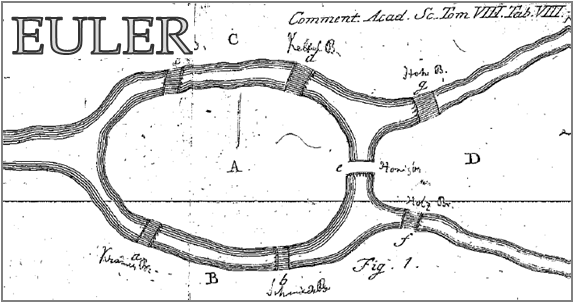 The EULER project is a 3-year STREP Project targeting Challenge 1 "Technologies and systems architectures for the Future Internet" of the Seventh Framework Programme (FP7). The project scope lies within the Objective ICT-2009.1.6 part b: “Future Internet experimentally-driven research”.
The main objective of the EULER exploratory research project is to investigate new routing paradigms so as to design, develop, and validate experimentally a distributed and dynamic routing scheme suitable for the future Internet and its evolution. The resulting routing scheme(s) is/are intended to address the fundamental limits of current stretch-1 shortest-path routing in terms of routing table scalability but also topology and policy dynamics (perform efficiently under dynamic network conditions). Therefore, this project will investigate trade-offs between routing table size (to enhance scalability), routing scheme stretch (to ensure routing quality) and communication cost (to efficiently and timely react to various failures). The driving idea of this research project is to make use of the structural and statistical properties of the Internet topology (some of which are hidden) as well as the stability and convergence properties of the Internet policy in order to specialize the design of a distributed routing scheme known to perform efficiently under dynamic network and policy conditions when these properties are met. The project will develop new models and tools to exhaustively analyse the Internet topology, to accurately and reliably measure its properties, and to precisely characterize its evolution. These models, that will better reflect the network and its policy dynamics, will be used to derive useful properties and metrics for the routing schemes and provide relevant experimental scenarios. The project will develop appropriate tools to evaluate the performance of the proposed routing schemes on large-scale topologies (order of 10k nodes). Prototype of the routing protocols as well as their functional validation and performance benchmarking on the iLAB experimental facility and/or virtual experimental facilities such as PlanetLab/OneLab will allow validating under realistic conditions the overall behaviour of the proposed routing schemes.
The EULER project is a 3-year STREP Project targeting Challenge 1 "Technologies and systems architectures for the Future Internet" of the Seventh Framework Programme (FP7). The project scope lies within the Objective ICT-2009.1.6 part b: “Future Internet experimentally-driven research”.
The main objective of the EULER exploratory research project is to investigate new routing paradigms so as to design, develop, and validate experimentally a distributed and dynamic routing scheme suitable for the future Internet and its evolution. The resulting routing scheme(s) is/are intended to address the fundamental limits of current stretch-1 shortest-path routing in terms of routing table scalability but also topology and policy dynamics (perform efficiently under dynamic network conditions). Therefore, this project will investigate trade-offs between routing table size (to enhance scalability), routing scheme stretch (to ensure routing quality) and communication cost (to efficiently and timely react to various failures). The driving idea of this research project is to make use of the structural and statistical properties of the Internet topology (some of which are hidden) as well as the stability and convergence properties of the Internet policy in order to specialize the design of a distributed routing scheme known to perform efficiently under dynamic network and policy conditions when these properties are met. The project will develop new models and tools to exhaustively analyse the Internet topology, to accurately and reliably measure its properties, and to precisely characterize its evolution. These models, that will better reflect the network and its policy dynamics, will be used to derive useful properties and metrics for the routing schemes and provide relevant experimental scenarios. The project will develop appropriate tools to evaluate the performance of the proposed routing schemes on large-scale topologies (order of 10k nodes). Prototype of the routing protocols as well as their functional validation and performance benchmarking on the iLAB experimental facility and/or virtual experimental facilities such as PlanetLab/OneLab will allow validating under realistic conditions the overall behaviour of the proposed routing schemes. Duration
36 months
Participants
Alcatel-Lucent Bell (ALB), Interdisciplinary Institute for Broadband Technology (IBBT), Université Catholique de Louvain (UCL), Institut National de Recherche en Informatique et en Automatique (INRIA), Université Pierre Marie Curie (UPMC), Research Academic Computer Technology Institute (RACTI), Universitat Politècnica de Catalunya (UPC) and University of Girona (UdG)
Contract number
258307
More Info
Project Website: http://euler-fire-project.eu/
-
Description
The main objective of the LIGHTNESS project is the design, implementation and experimental evaluation of a high-performance network infrastructure for data centres, where innovative photonic switching and transmission solutions are deployed. Harnessing the power of optics will enable data centres to effectively cope with the unprecedented demand growth to be faced in the near future, which will be driven by the increasing popularity of computing and storage server-side applications in the society. Indeed, the deployment of optical transmission systems leveraging Dense Wavelength Division Multiplexing (DWDM) allows the transmission of more than a hundred of wavelength channels operating at 10, 40, 100 Gb/s and beyond. This effectively results in “unlimited” bandwidth capacities of multiple Terabit/s per fibre link, which can be efficiently utilized through next-generation all-optical switching paradigms like Optical Circuit Switching (OCS) or Optical Packet Switching (OPS). In this context, LIGHTNESS will join efforts towards the demonstration of a high-performance all-optical hybrid data plane for data centre networks, combining both OCS and OPS equipment to implement transport services tailored to the specific applications’ throughput and latency requirements. To this goal, an OPS node suitable for intra- data centre connectivity services will be developed and prototyped during the project, together with an enhanced Top of the Rack (TOR) switch seamlessly connecting servers in each rack to the hybrid OCS/OPS inter-cluster network. As an additional achievement of LIGHTNESS, the OCS/OPS inter-cluster network will be empowered with a network control plane able to dynamically provision flexible connectivity services in the hybrid OCS/OPS data centre network. Such a control plane will also be developed and prototyped for integration in the final LIGHTNESS demo throughout the project.
Duration
36
Contract number
FP7-318606
-
Description
PRISTINE intends to: 1) Design, develop and implement the innovative internals of the Recursive InterNetwork Architecture (RINA) clean-slate architecture that include the programmable functions for: security of content and application processes, supporting QoS and congestion control in aggregated levels, providing protection and resilience, facilitating more efficient topological routing, and multi-layer management for handling configuration, performance and security. 2) Demonstrate the applicability and benefits of this approach and its built-in functions in use-cases driven by the end-users, service providers and equipment vendors in the consortium. This will ensure that the applications and tools we develop will be deployable by providers, and have a greater potential for future exploitation.
Duration
30 month
Participants
CCABA, i2Cat
Contract number
FP7-619305
-
Description
COSIGN proposes a new DC architecture empowered by advanced optical technologies and will demonstrate novel solutions capable of sustaining the growing resource and operational demands of next generation DC Networks. COSIGN aims to move away from today's vendor specific, manually controlled, performance and scale limited DCs towards scalable DC solutions able to support future-proof dynamic, ondemand, low-latency, energy efficient and ultra-high bandwidth DC solutions.
Duration
36 month
Participants
CCABA
Contract number
FP7-619572



